Dr Kiriwandeniya and SANASA Brand
 As he celebrated his 80th birthday last week, it drew my attention on the fact that, Dr Kiriwandeniya has built a global brand with his simple thinking and learning that he gathered through his education and sheer hard work. He has spent half of his life building SANASA brand and building a social business empire, which stated with SANSA Development Bank and then diversifying into Insurance, and then to education etc. May this article be a tribute to the man who made it all possible in his life span and then to build a second-tier leadership pipeline to take over his business.
As he celebrated his 80th birthday last week, it drew my attention on the fact that, Dr Kiriwandeniya has built a global brand with his simple thinking and learning that he gathered through his education and sheer hard work. He has spent half of his life building SANASA brand and building a social business empire, which stated with SANSA Development Bank and then diversifying into Insurance, and then to education etc. May this article be a tribute to the man who made it all possible in his life span and then to build a second-tier leadership pipeline to take over his business.
We should be grateful to Dr Kiriwandeniya as a nation for the contribution made to make the lives of rural Sri Lanka a better one which I realized was one of his main life goals. Sanasa and lessons for entrepreneurial – service branding Creating and sustaining brands to be accepted by diverse individuals with unique personalities and behavioural patterns is not an easy task. In other words, maintaining inclusiveness is much harder than being an exclusive brand. Be it a brand focusing on capturing the mass market or a niche market, each one will encounter its own set of risks and challenges.
The Sri Lankan market is merely an island, where each brand has limitations in expanding its reach: no matter how hard one tries, it will still be capturing a population of just 22 million people. In this reality, creating and sustaining brands have only been limited to a point of reaching a given sales target. Nevertheless, there have been brands which have cut through the clutter in the local market. They have been able to remain true to their ultimate role of a service provider to the users of such services. Thus, these brands have widely influenced society.
SANASA is one such brand which has been successful in dominating certain sectors, with its origin in Sri Lanka and the authentically rural Sri Lankan ethic. Brands such as SANASA were successful as it became a part of the lifestyle of its leader/s. This means, the leader initiating this change did not say one thing and do another. There was no duality in what the cooperative movement leaders of 1978 onwards said and what they did. Sanasa is also one of the rare examples of being able to handle the storms of the vicissitudes of time that impacts many brands.
Although there were certainly severe challenges faced by the Sanasa Development Bank due to external issues, Sanasa as a brand perfected the art of product diversification. Perfecting of the art of product diversification and powerful branding was possible for Sanasa because of the value system it stood by. It flowed against the tide and brought the village to the city and made the village preach to the town. The journey of such a brand can never end and be static – hence it is an ongoing process providing endless opportunities for ownership and moulding by those it was meant for; progressive leaders whose heart remain in the village. Let us look at one example in branding from the lens of fashion.
Fashion has always been rewarding and sexy. Yet, it has always been challenging and dynamic. It has a lot more to do with the overall customer experience and intangible aspects of the brand, than tangibles. Quality and the price tag matter and are influencing factors but they are not the only ones. In essence, just being a brand which is bought and consumed is not enough to top the list in the sector. SANASA proved that a brand becomes successful only when it becomes a part of the lifestyle of its target audience and of the brand owners. “Now it’s very important to realise that a brand is built in and at the very core, at the very essence of the brand is its core proposition and that is something the marketer has to work out, not the advertising agency.” (Late Professor Uditha Liyanage).
This means that Brand Essence should be in-built, not bolt-on by an advertising campaign. What Professor Liyanage essentially highlights is that before being a brand, it needs to be a better product which delivers quality. It’s only then that the advertiser can create an aura around the brand to form emotional connections between the brand and the audience. At the same time, when it’s a service, the service brand needs a face and in the case of SANASA the face of the brand was/is Dr. Kiriwandeniya. “There will be no branding or existence of brands in the absence of advertising”. This was mentioned decades ago by the renowned business leader; Henry Ford when he said, ‘A man who stops advertising to save money is like a man who stops a clock to save time’.
However, in paving the path for the advertiser to come up with creative instincts, the brand owner should provide the right direction and guidance. In the absence of a well-thought strategy to develop the brand, the advertiser will be only a communicator who has no aim in his communication. Moreover, a brand must go beyond the level of simply providing value for money. In fact, a successful brand can always create “value” than creating “value for money”. Price will become irrelevant at a point where the brand reaches and touches the hearts of its consumers.
“At SANASA, we are truly committed to serve the bottom end of the pyramid. It doesn’t mean we don’t or we are not keen to serve the top and the middle. But we know if we don’t serve the bottom end, there will be no one else who would take care of them.” Dr. Kiriwandeniya Responding to a question as to why SANASA doesn’t change its branding, the leader and founder of SANASA Dr. Kiriwandeniya further mentioned once to his team as follows: “A service brand not only touches the body, but it also touches the heart and soul of its audience.
Dr. Kiriwandeniya was the first to realize it in the insurance sector in Sri Lanka and to cater to the economic as well as physical and mental needs of rural Sri Lankans who are a category of people for whom insurance was and still is seen as a luxury. He could challenge the norms of the local insurance sphere and was able to bring the benefits of insurance to the bottom end of the market. The origin of the name SANASA has a lot to do with this ideology (which was coined with the first letters of SAKASURUWAM (Thrift) NAYA (Loans) SAMITHI (Societies). A brand must be felt rather than just being bought. It must be a friend and not just a consumable entity.
It must be felt emotionally than just being a rational purchase-based decision. A brand must pass through the phases to reach the final point of being close to the hearts of the customers or the consumers. Awareness-Consideration- Trial are the three main aspects of any brand plan to address the market at a much broader level. If the brand can do justice to the decision taken by the customer to try it, the repeat purchase will happen subsequent to the trial. However, the bottle-neck for any new brand would be the trial period. As a brand passes through these three stages, it will gradually get closer to the hearts of its target market, and in turn create loyalty towards the brand.
Therefore, the pivotal task of a brand is to connect the head (Logical needs of the consumer), heart (Emotional needs of the consumer) and the hands (Customer/Consumer engagement) of the consumers. This way the brand will remain on top of the mind, so that it will - in the long run – be consistently in the hearts of the customers. Triad of brand touch points – and brand extensions built around the same main brand. (Main Brand – SANASA and Extensions – SANASA Life and SANASA General Dr. Kiriwandeniya, though he was not a banker or a marketer in the conventional sense (meaning that he did not learn these disciplines as a specific profession through the formal banking or marketing sphere), was able to craft brands that held the attention of the consumer for decades. In the realm of Insurance, he did this by introducing the brilliant mechanism of lending happening inside an inner circle where each loan applicant is well known to the leaders of the society.
Approval of loans will only be possible if everyone in the society can grant the approval but in order for them to do so, the loan applicant has to be known to everyone. This above is the same system which is now in practice among mainstream banks as KYC (Know Your Customer). However, in the system which was developed by Dr. Kiriwandeniya based on the village community blueprint, the KYC was already in-built and there was nothing to be newly implemented. The following model of entrepreneurial branding is based on my own MBA thesis which was conducted under the supervision of late Prof Uditha Liyanage who is considered as the Guru of Marketing in SL. According to the findings of the study for a Brand to Thrive there are many contributing factors: Word of mouth communication and PR: Advertising and promotions can create awareness about the brand; but there is no way of estimating how much of advertising money is wasted without reaching the target audience.
WOM refers to, “word of mouth”, as well as “word of mouse”. Increasing usage of internet – information super-highway or the ‘word of mouse’ has created immense opportunities for brand marketers to come up with creative messages which tend to be shared by online social media users inducing Sharing, Liking and Commenting etc.,). At the outset Dr Kiriwandeniya was relying more on Word-of-mouth to work for the development of the brand which is a proven and low-cost method. Innovation and Consistency: Innovation can mean a lot when it is consistent. Continuous innovation in every aspect of the business is the key to success. It’s not just the products but also the processes.
Brands should evolve. If it gets stagnant, it can fade away from the minds of consumers over a period of time because taste and expectations of consumers keep changing. However, it should evolve in a consistent way by keeping brand values at the core. Frequent changes in brand values and the stand (Strategy or the overall direction) are not recommended. This is evident when Dr. Kiriwandeniya mentions the fact that they let businesses to have a humble beginning and then let them grow organically. It holds that patience is a virtue but in today’s business world there is no virtue seen in patience as everyone is in a mighty hurry.
However, as a social entrepreneur who was rooted in the indigenous, Dr Kiriwandeniya always had enough patience to see how his brands grew slowly but steadily. The SANASA branding also has remained stable over the years without having frequent changes. Brand Owner: One of the critical success factors of a brand which can decide if it will survive in the long run or thrive is the brand owner. Great brands created in the local context such as Siddhalepa, Maliban, Harischandra, Link, Dilmah, Mlesna, Spa Ceylon and Odel had their own brand owners who devoted his/ her life to the brand, until it could stand on its own. Successful brands always grow with a person who has his/her ownership of it.
Brands can fail in the event of frequent changes in brand custodians. Nevertheless, having an owner wouldn’t mean much, if the owner has not got the right skills to blend the opportunities in the market with creative insights, which determines as to how the brand should be presented to the market in each “window of opportunity”. In the case of SANASA, for the last 50 years, the creator of the brand has remained truly committed and dedicated to drive it through thick and thin. Sri Lanka has gone through many challenges over the last 50 years. However SANASA as a brand has kept growing despite all odds.
Branding Flower and Petals The following model is based on how a brand could be developed in a sustainable manner. Brands may rise or fall and may die a natural death after a while. Some brands never reach the stage of growth or maturity in its life cycle. The metaphor used in the model to denote a brand is a flower. If a brand were a flower, it would have the following elements which work in harmony to create a lasting impact in its customers’ mind. In the same way, as far as a brand is concerned, there are key elements that need to be identified which collectively make it succeed in the market. If a brand was a flower, the petals of the same would have an equal impact on the beauty of the flower. It will be quite costly to miss at least one of those petals if the flower is to seem prettier.
The areas recommended are the petals of the flower, which make it a perfect brand in general and more specifically in the services sector. At the same time, the petals cannot be on their own, especially, if the supporting elements are not strong enough or supportive enough to hold the petals. Brand awareness and brand benefits to the customer could also be the petals which give its beauty, attraction, and aroma. In the same way, for a brand to be successful, it needs to have a solid structure which supports the petals. n Receptacle: The expanded tip of a flower stalk or axis that bears the floral organs or the group of flowers in a head. For SANASA, it’s the Costleadership – being the lowest price provider in the market.
Every brand needs to have its own ‘stand’ in the market. (The stand is to be understood in the context of the Space, Scope, Stand and Standing; a framework introduced by Late Prof. Liyanage in his teaching). In this context the Stand would essentially mean the strategy: either differentiation or cost leadership). The Space for SANASA is financial services predominantly, the SCOPE being two-fold; Insurance and Banking. Generic Strategy (Michel Porter) adopted by the author n Pedicel: This is the stalk supporting the flower. For a brand to grow well in the market, a committed pedicel is required. Dr. Kiriwandeniya was the pedicel for SANASA. Merill J. Fernando was the pedicel for Dilmah. Anselm Perera was the Pedicel for Mlesna, Dr. Hettigoda was the Pedicel for Siddhalepa and Hinni Appuhamy was the pedicel for Maliban.
For a brand to grow and sustain, it should become someone’s baby. Brandownership, alongside both left and right brain thinking is required for a brand to do well in the market. A left brain or right brain driven person would be skewed towards one direction. What’s required is the right balance of both sides in the person to take best care of the brand. Another important factor highlighted here is, that, for a brand to thrive, the brand owner should dedicate his/ her life and should start living with it. It’s in this context, that the need for entrepreneurial brand ownership is appreciated over a paid form of a designated brand manager’s role, who would only do the part of performing responsibilities confined to the Job description (JD).
Another limiting factor would be the ease of decision making and the ability to take risks, while responding to opportunities in the market as a paid employee (Brand Manager). The flip side of the coin is that those who realise the difference between the role of a paid employee as a brand manager and an entrepreneurial brand manager would minimise the gap between the two. By and large, for Dr. Kiriwandeniya, SANASA was his life… he grew with it and he truly loved it… n Sepal: This refers to the hard factors or the visible, tangible factors. These are the calyx of the flower. This could mean all four Ps or seven Ps in marketing; but, essentially the product quality, availability, advertising, and communication; the right price which denotes and support positioning of the brand, ambience, and trained staff to cater to the market.
In the case of SANASA, how he developed structures, how he managed to develop a culture to promote core values of the brand are remarkable. n Petals: The soft factors (Intangibles)–Consistent brand identity, Brand experience, Brand personification and CSR, can be crucial in deciding whether the brand is going to remain strong in the market or not. Consistency in communication and providing a pleasing experience in the case of service brands will be vital to succeed. CSR and brand personification could be the icing on the cake. Brand personification could mean a lot in service branding as it’s intangible and invisible.
For a brand to thrive in the market, all four aspects should come hand in hand, in delivering the brand promise. Summary Even though, the above four factors are highlighted as the key elements of a successful brand, these alone wouldn’t make the brand a successful one. In addition, a lot of planning and passion will go into a brand; and on top of all the said factors, the visionary leadership of brand owners can determine how long a brand can remain in the market. After all, a vision without execution is hallucination.
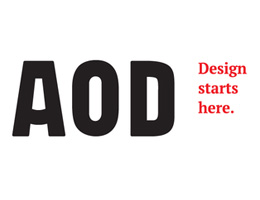



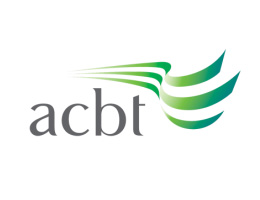


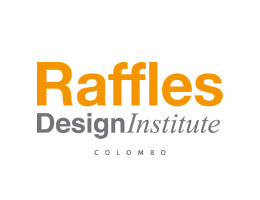



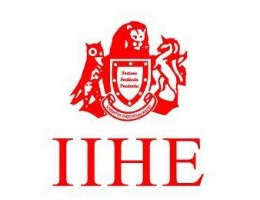

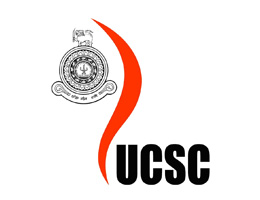



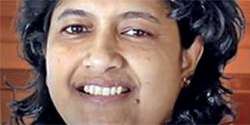
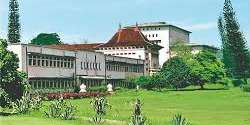
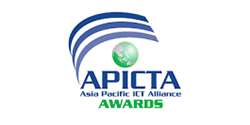
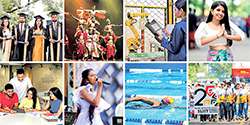


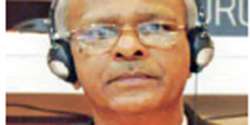

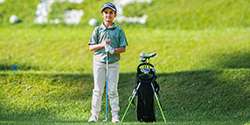

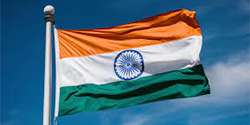
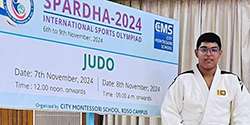


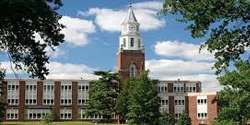
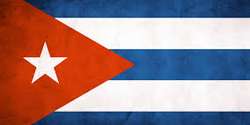








.jpg)

.jpg)
.jpg)
.jpg)
.jpg)
